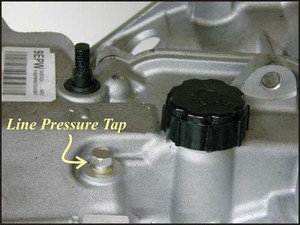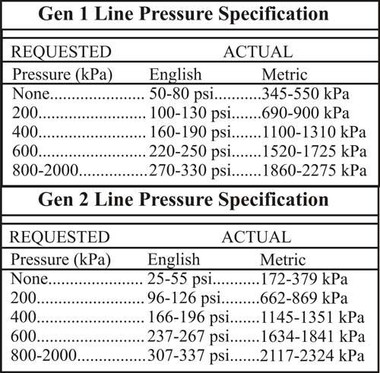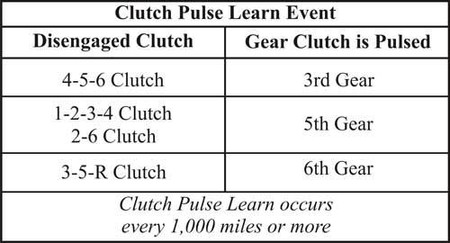A Look At Ford and GM’s Jointly Built 6T40 Transmission
Inside, we will be looking at the Line Pressure Specifications and continuation of our 4 part series.
The line pressure tap is conveniently located on top of the transmission alongside the transmission’s fill cap. Gen 1 and 2 line pressure specification tables are provided. Specifications were taken from a 2013 Chevy Cruze factory repair manual.
| Another software change that took place is related to the elimination of the pressure switches inside the TEHCM assembly. These pressure switches were originally used (Gen 1) to monitor clutch operation via the solenoids and regulator valves for adaptation purposes.
With the elimination of the pressure switches in Gen 2 versions, a new program is used to determine adapts called “Clutch Pulse Learn.” United States Patent Application 20120067690 A1 entitled: Hydraulic clutch and method for determining an adaptive clutch fill volume of the hydraulic clutch provides some insight to its method for learning a characteristic filling volume of a hydraulic clutch. |
Generally, the method is comprised of:
- Applies a pressure pulse to a hydraulic clutch when it is in a disengaged state
- It determines an inflection event at a torque path that comprises the hydraulic clutch (return spring force).
- Derives a characteristic filling volume of the hydraulic clutch from the inflection event.
GM factory manuals describes the “Clutch Pulse Learn” strategy as a “Non-Shifting Clutch Function Verification” and describes it as follows:
|
Thanks for reading and we hope this information was just as helpful as the other 2 parts of this 4 part series. We will be finishing the last part of this series next week and it will include some extremely vital and more important info for the 6T40 transmission.






